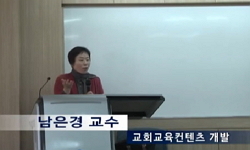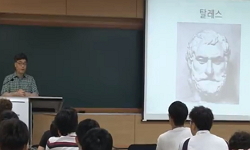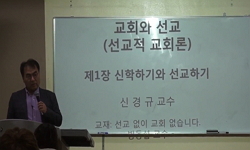The purpose of this study was to develop the evaluation criteria set in order to evaluate properly the education programs of beginning teachers of church school and thereupon to develop the evaluation criteria set through validation process. In order ...
http://chineseinput.net/에서 pinyin(병음)방식으로 중국어를 변환할 수 있습니다.
변환된 중국어를 복사하여 사용하시면 됩니다.
- 中文 을 입력하시려면 zhongwen을 입력하시고 space를누르시면됩니다.
- 北京 을 입력하시려면 beijing을 입력하시고 space를 누르시면 됩니다.
교회 교사양성 프로그램 평가준거 개발연구 = (A) study on development and validating evaluation criteria set of education programs for beginning teachers of church school
한글로보기https://www.riss.kr/link?id=T8158233
- 저자
-
발행사항
서울 : 서울여자대학교 대학원, 2001
-
학위논문사항
학위논문(박사) -- 서울여자대학교 대학원 , 교육심리학과 , 2002
-
발행연도
2001
-
작성언어
한국어
- 주제어
-
KDC
370.88 판사항(4)
-
DDC
370.15 판사항(21)
-
발행국(도시)
서울
-
형태사항
iv, 150p. : 삽도 ; 26cm .
-
일반주기명
참고문헌 : p. 117-128
- 소장기관
-
0
상세조회 -
0
다운로드
부가정보
다국어 초록 (Multilingual Abstract)
The purpose of this study was to develop the evaluation criteria set in order to evaluate properly the education programs of beginning teachers of church school and thereupon to develop the evaluation criteria set through validation process. In order to achieve the purpose of the study, following problems were constructed:
First, to research the evaluative basis of the education programs for beginning teachers of church school.
Second, to research the development logic of the evaluation criteria set in the education programs for beginning teachers of church school.
Third, to inquire into the development and validation process of the evaluation criteria set.
By using qualitative study methodology, 4 domains and 41 evaluation criteria were conceptualized as purpose, content, method and evaluation of education, among which content and method were specialized into 5 sub-domains. In order to validate the developed evaluation criteria, the self-administered questionnaires were filled out by 830 sampled persons, but returned from 684 respondents. Among them only 639 questionnaires were used.
The following conclusions are derived:
1. The evaluation criteria which were set up by making much of the basic logic of program evaluation can be called a reliable and proper tool verified by various groups concerned. Hence, the evaluation criteria established in this study can be used as a proper tool in order to evaluate the education programs for beginning teachers of church school.
2. The evaluation criteria also can function as general criteria when church tries to evaluate the education programs for beginning teachers of church school.
3. The evaluation criteria can give a concrete help to any church leader who wants to develop more qualitatively improved education programs for beginning teachers of church school than any previous, existing program.
목차 (Table of Contents)
- I. 서론 = 1
- 1. 연구의 필요성 및 목적 = 1
- 2. 연구의 내용 = 4
- 3. 용어의 정의 = 5
- 4. 연구의 제한점 = 7
- I. 서론 = 1
- 1. 연구의 필요성 및 목적 = 1
- 2. 연구의 내용 = 4
- 3. 용어의 정의 = 5
- 4. 연구의 제한점 = 7
- II. 교회 교사양성 프로그램 평가의 근거 탐색 = 9
- 1. 교회 교사양성 프로그램의 목적 = 10
- 2. 교회 교사양성 프로그램의 대상 = 12
- 3. 교회 교사양성 프로그램의 내용요소 = 20
- 4. 교회 교사양성 프로그램에서 활용하는 교육방법 = 27
- 5. 교회 교사양성 프로그램에 대한 평가의 의의 = 36
- III. 교회 교사양성 프로그램 평가준거개발의 배경 논리 = 41
- 1. 평가논리와 평가방법 = 41
- 2. 교회 교사양성 프로그램의 평가논리와 방법 = 44
- 3. 평가준거 개발의 근거 = 47
- 4. 선행 연구 고찰 = 58
- IV. 평가준거의 개발 및 타당화 = 65
- 1. 평가준거의 개발 = 65
- 1) 평가준거영역과 준거항목의 추출 과정 = 65
- 2) 평가준거의 영역 및 준거항목의 설정 = 73
- 2. 평가준거 타당화 방법 = 79
- 1) 연구 대상 = 79
- 2) 분석 도구 = 82
- 3) 자료수집 방법 = 82
- 4) 자료 처리 = 83
- V. 평가준거 타당화의 결과 = 85
- 1. 평가준거 내용에 대한 타당성 검증결과 = 85
- 2. 평가준거 영역별 문항 내적 일치도 검증결과 = 90
- 3. 평가 집단간의 의견일치도 검증결과 = 90
- 4. 평가준거항목의 영역에 대한 타당성 검증결과 = 95
- VI. 논의 = 97
- VII. 결론 및 제언 = 109
- 1. 결론 = 109
- 2. 제언 = 113
- 참고 문헌 = 117
- 부록 = 129
- 영문초록 = 149













